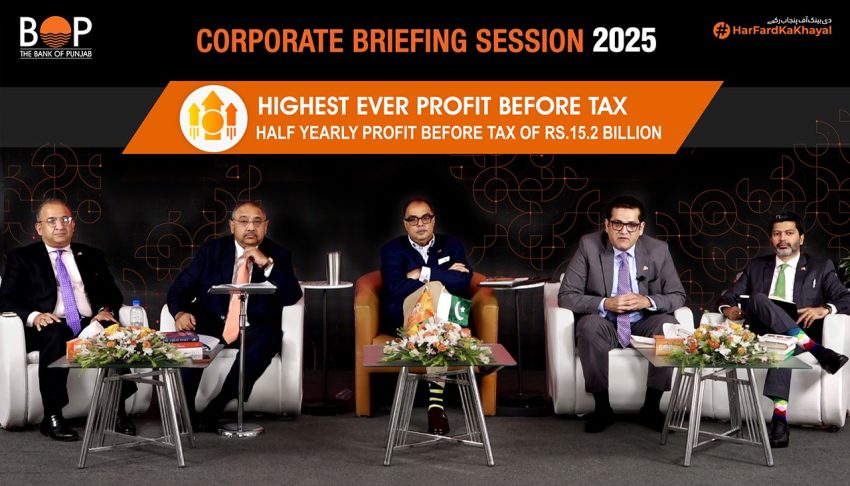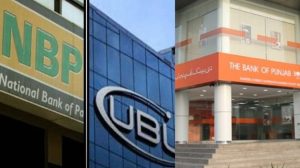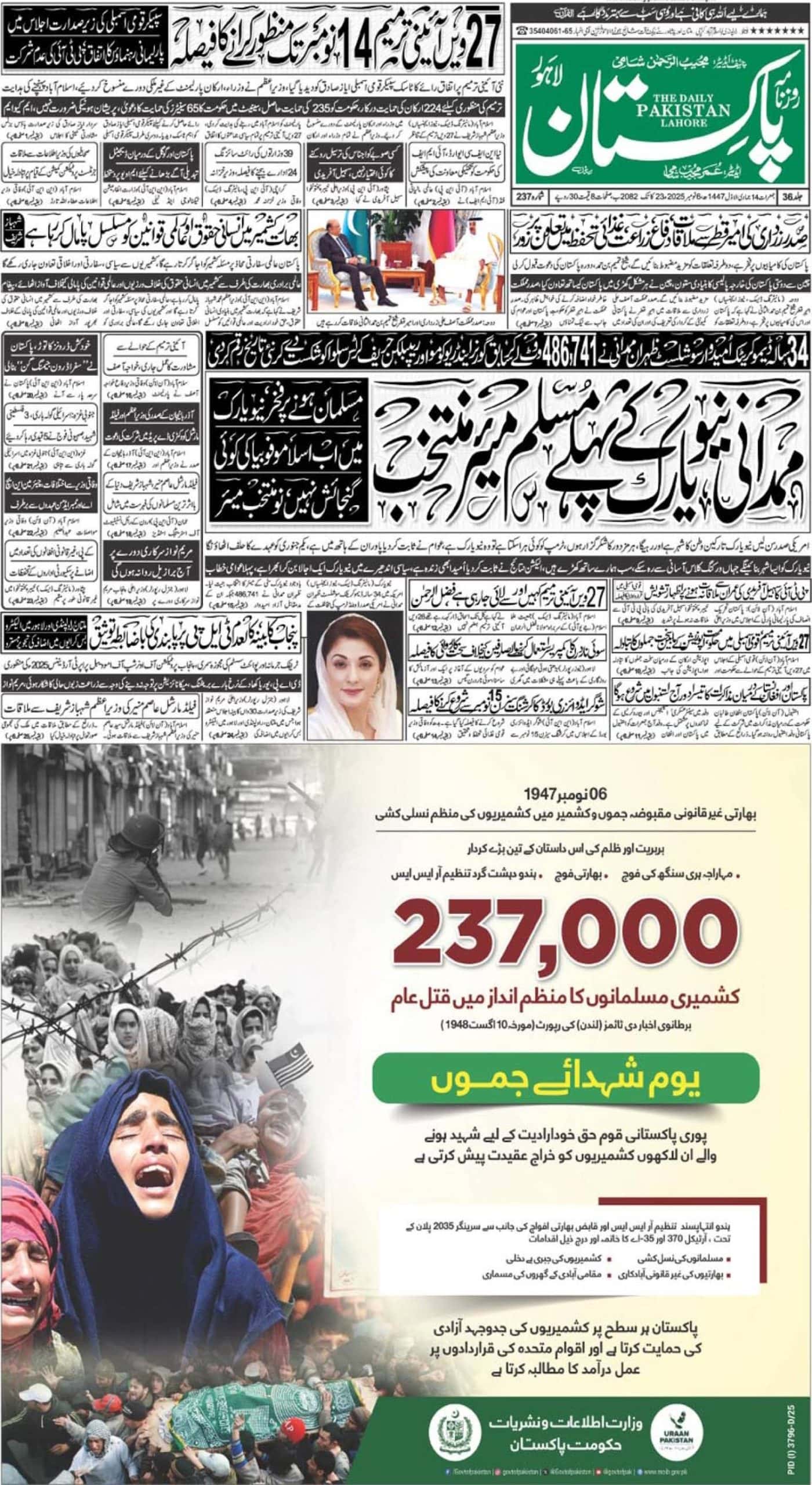LAHORE — Bank of Punjab (BOP) yesterday hosted a corporate briefing for brokerages, research analysts, and market participants to share its half-yearly and annual financial performance. The session was led by President & CEO Mr. Zafar Masud, joined by Mr. Nadeem Amir (Chief Financial Officer), Mr. Nofel Daud (Chief Digital Officer), Mr. Kamran Hafeez (Company Secretary), Mr. Qasim Nadeem (Group Head Treasury & Capital Markets), and Mr. Umer Khan (Group Head Corporate & Investment Banking).
BOP reported record results in the first half of 2025, underscoring the strength of its business strategy and operational execution. Operating profit grew by 278% during the period, while Profit Before Tax climbed to Rs. 15.2 billion, the highest in the Bank’s history. In line with its new dividend policy, BOP announced its first-ever interim cash dividend of 10%. Deposits reflected robust growth momentum, with current deposits increasing by 43% and Islamic deposits by 80%. On the back of this exceptional performance, the Bank’s share price appreciated by 294% over the past year, taking its market capitalization to a record Rs. 63 billion.
Q&A session with analysts revolved around a number of important themes. On the sustainability of performance, management emphasized that profitability was built upon structural improvements in the deposit mix, accelerated digital adoption, and growing fee income streams, making it durable and not reliant on one-off gains.
Analysts also raised concerns about the potential impact of the recent floods on the Bank’s agriculture and SME portfolios. Management explained that Agriculture and SME financing together account for around 1/3rd of the Bank’s loan book, but only about 8% of this exposure lies in flood-affected areas. Of this, nearly 76.59% is covered through first-loss guarantees provided under various government schemes, leaving only a small proportion uncovered. Within the Bank’s own commercial portfolio, the overwhelming majority is collateralized and insured, with only a negligible fraction — less than 0.18% of the total exposure — unsecured. Recovery performance remains strong, with the flagship Kissan Card portfolio achieving repayment rates of around 99% in its first cycle, while any residual balances are absorbed under guarantee structures. Management emphasized that this high level of protection, combined with prudent lending practices and data-driven client selection, ensures that BOP’s SME and agriculture portfolios remain resilient despite climate-related shocks.
In response to questions on the repricing of term deposits and investment strategy, management clarified that Rs. 502 billion in term deposits had been carried over from the previous year, of which 87% had already matured by August, leaving only 13% pending maturity. This, they explained, had helped improve spreads on liabilities. On the investment side, management shared that the portfolio consists of 57% floating rate bonds, 19% fixed PIBs, and 24% T-bills, reflecting a balanced and cautious approach to risk and return.
Analysts also sought clarity on the Bank’s current account mix and deposit growth outlook. Management reported that BOP’s current account ratio had improved from 17% in 2023 to 24% by the first half of 2025, surpassing the Bank’s year-end target of 22%. This reflects the success of deliberate measures to strengthen the low-cost deposit base through Islamic banking expansion and customer-first digital initiatives.
Questions were also raised regarding the share price outlook. While reiterating that the Bank does not provide formal forward-looking guidance on share price, management highlighted that BOP’s structural reforms, improved dividend payouts, and sustained profitability had already contributed to a 294% increase in share price over the past year. They expressed confidence that this momentum will continue, supported by the Bank’s strong fundamentals and long-term strategy.
Commenting on the Bank’s performance, President & CEO Zafar Masud remarked: “Our results are a culmination of years of structural changes targeting private low-cost deposits, leading to effective repricing of deposits, growth in low-cost current accounts, and efficient treasury operations. At the same time, we remain cautious and well-prepared to navigate external risks, including climate-related challenges, while delivering consistent value to our stakeholders.”
Looking ahead, BOP reaffirmed its strategy to further enhance customer experience, accelerate digital transformation, and expand financial inclusion, with particular emphasis on SME, agriculture, and housing finance.
BOP reports record half-yearly profits, announces first-ever interim cash dividend














